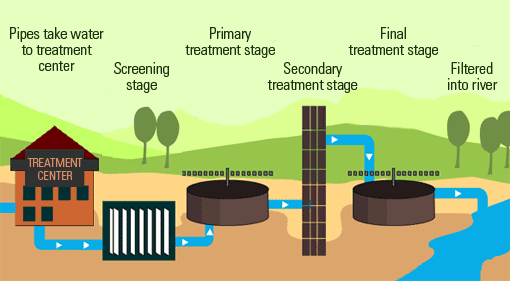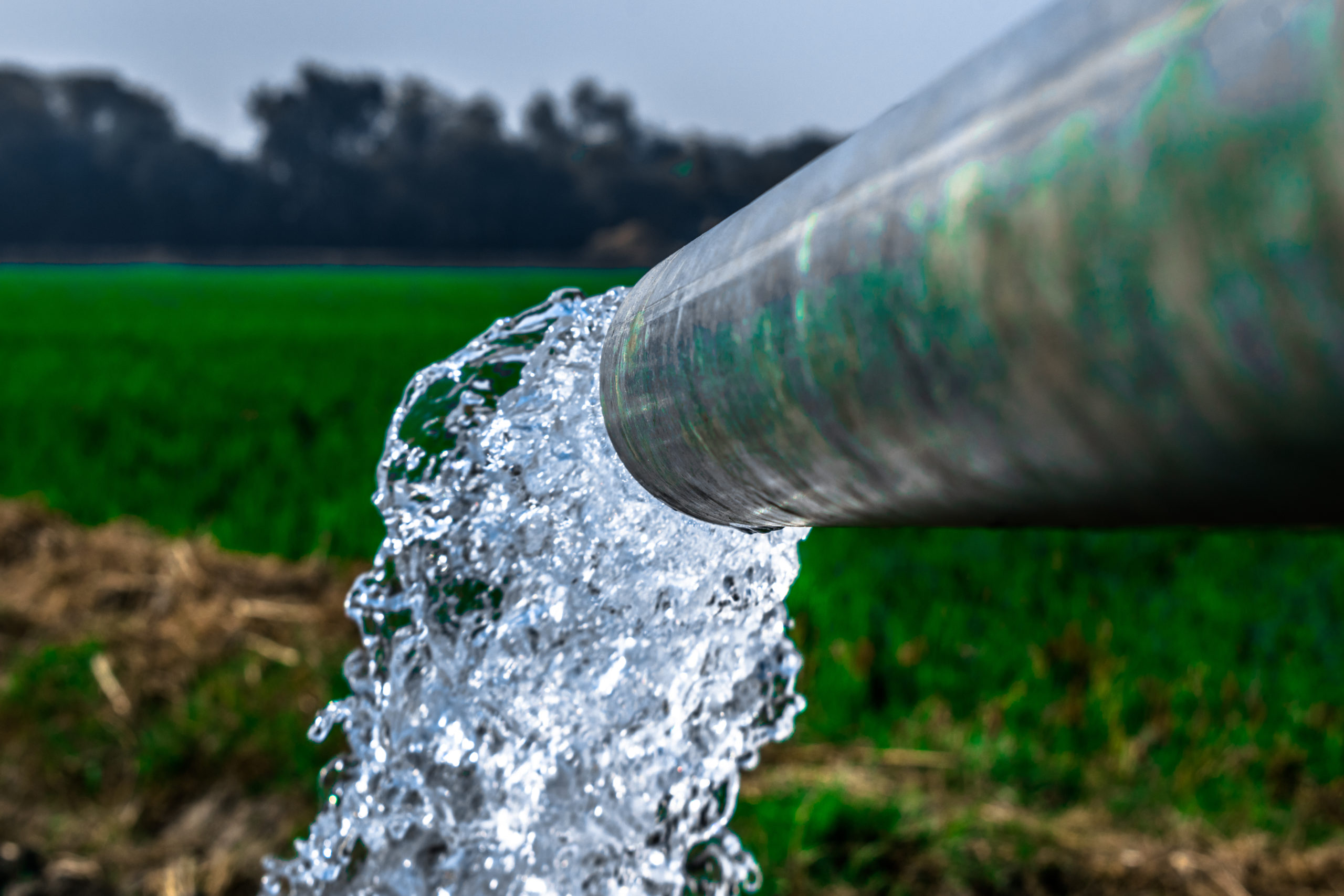Economical Solutions for Large-Scale Waste Water Treatment Facilities
Wiki Article
Optimizing Waste Water Therapy Processes: Strategies for Improved Water Top Quality and Resource Recovery
In the world of wastewater therapy, the quest for improving performance and sustainability with procedure optimization is a continuous search that holds tremendous value. From advanced innovations to cutting-edge resource healing approaches, the landscape of wastewater therapy is evolving rapidly.Value of Refine Optimization
Maximizing waste water therapy processes via thorough process optimization is important for taking full advantage of performance and guaranteeing ecological sustainability. By fine-tuning each action of the treatment procedure, from preliminary consumption to last discharge, water treatment facilities can accomplish greater degrees of contaminant removal, decrease energy intake, and lessen the generation of waste by-products. Refine optimization involves assessing key performance indications, such as hydraulic retention times, sludge retention times, and nutrient levels, to determine locations for improvement and implement targeted services.Effective process optimization not just enhances the total efficiency of drainage therapy plants however also contributes to set you back financial savings and regulatory compliance. By optimizing procedures, operators can achieve higher therapy abilities without the demand for substantial infrastructure financial investments. Additionally, enhanced therapy effectiveness brings about cleaner effluent discharge, minimizing the environmental effect on obtaining water bodies and ecological communities.

Advanced Therapy Technologies
In the realm of waste water therapy, the execution of innovative therapy innovations plays a critical function in improving the overall efficiency and effectiveness of the treatment procedures. These innovative innovations provide ingenious services to resolve complicated impurities present in wastewater streams, guaranteeing the elimination of contaminants to meet rigorous water high quality requirements. Advanced treatment processes such as membrane bioreactors, ozonation, progressed oxidation procedures, and turn around osmosis enable the comprehensive removal of contaminants, including emerging toxins like drugs and personal care items.Moreover, these modern technologies facilitate source recovery by drawing out beneficial materials such as phosphorus, nitrogen, and power from the wastewater. Advanced nutrient elimination modern technologies can recuperate phosphorus and nitrogen for reuse in agricultural fertilizers, while power recovery systems like anaerobic digestion can harness biogas for electrical energy generation. By integrating advanced treatment technologies into wastewater therapy plants, drivers can enhance water top quality, decrease ecological effect, and relocate towards an extra resource-efficient and sustainable technique to wastewater administration.
Resource Healing Strategies
Resource recovery methods in wastewater treatment processes play a critical duty in optimizing the utilization of useful resources included within wastewater streams. One typical resource healing method is the removal of nutrients like phosphorus and nitrogen from wastewater for reuse as fertilizers or in industrial procedures.
Water recovery strategies, such as membrane technologies and progressed filtration systems, allow the treatment and reuse of water for non-potable applications like watering or commercial processes. By executing source healing methods in wastewater therapy plants, not just can valuable sources be preserved and reused, but the general sustainability and performance of the therapy procedure can be look at here now substantially boosted. As the focus on source deficiency and ecological sustainability continues to expand, the value of integrating resource healing strategies into wastewater therapy processes becomes progressively apparent.
Sustainable Practices in Wastewater Therapy
Implementing sustainable methods in wastewater therapy centers is vital for improving environmental stewardship and lasting functional performance. Sustainable practices in wastewater treatment incorporate an array of techniques focused on decreasing the ecological effect of treatment processes while making the most of source recovery. One key aspect of lasting wastewater therapy is the application of energy-efficient innovations to decrease the carbon footprint of treatment plants. This can consist of using sustainable energy resources such as solar or wind power, along with the optimization of existing processes to lessen energy consumption.In addition, the fostering of innovative treatment innovations that promote water reuse and recycling plays an important duty in sustainable wastewater monitoring. By dealing with wastewater to a high requirement, it can be repurposed for various non-potable applications, such as irrigation, commercial procedures, and also drinkable water manufacturing sometimes. This not only preserves beneficial freshwater resources however also decreases the volume of effluent discharged into the atmosphere.

Case Studies on Effective Optimization
As wastewater therapy facilities significantly concentrate on lasting methods, real-world study showcasing successful optimization strategies function as invaluable designs for market improvement. One such situation study focuses on the application of sophisticated nutrient elimination innovations in a community wastewater therapy plant. By incorporating biological nutrient elimination processes and maximizing operational parameters, the center achieved considerable reductions in nitrogen and phosphorus levels released into getting waters, inevitably boosting total water quality.An additional noteworthy instance study involves the integration of anaerobic food digestion systems in a website link commercial wastewater therapy plant to improve power recovery and resource efficiency (Waste Water Treatment). With the food digestion of natural waste materials, the center not only produced biogas for power manufacturing however likewise lowered the quantity of sludge requiring disposal. This dual benefit not only enhanced the plant's sustainability efficiency yet additionally caused cost financial savings
These effective optimization approaches show the potential for wastewater treatment facilities to attain both economic and ecological advantages through efficient procedures and innovative approaches. By picking up from these instance studies, market professionals can additionally optimize their own operations to boost water top quality and resource healing.
Conclusion
In final thought, maximizing waste water therapy processes with sophisticated technologies, resource recovery techniques, and sustainable practices is essential for enhancing water quality and optimizing source healing. Waste Water Treatment. Case studies have shown effective execution of optimization approaches in different wastewater treatment facilities. By remaining to prioritize process optimization, we can guarantee reliable and efficient treatment of wastewater, inevitably causing a more environmentally pleasant and sustainable technique to handling water resourcesBy fine-tuning each step of the therapy process, from first intake to last discharge, water therapy facilities can attain greater levels of contaminant removal, reduce energy consumption, and lessen the generation of waste byproducts.In the world of waste water treatment, the application of innovative therapy technologies plays a crucial role in enhancing the general effectiveness and effectiveness of the therapy procedures. By integrating sophisticated treatment innovations into wastewater treatment plants, drivers can improve water quality, lower ecological influence, and move towards an look at this web-site extra sustainable and resource-efficient strategy to wastewater monitoring.
By applying source recovery strategies in wastewater therapy plants, not just can important sources be conserved and recycled, but the general sustainability and effectiveness of the treatment procedure can be considerably improved. Sustainable methods in wastewater therapy encompass a variety of methods aimed at minimizing the ecological influence of treatment processes while making the most of source recuperation.
Report this wiki page